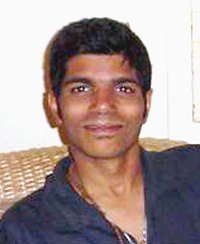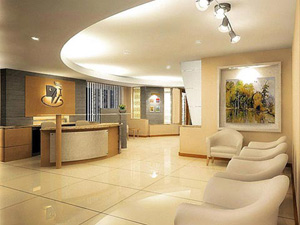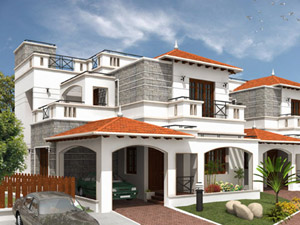
The most challenging part in this industry is to make your images “speak”. Speak as in let the image fulfill its purpose of showing something which is not there but how it’s going to be if its there.
Maria Prem, an architect by profession runs an architectural visualization company in Coimbatoreby the name of Renderviz.
Architectural Visualisation is yet another field that uses CG in a big way.While there is a marked difference in approach of a CG professional working in visualization as compared to someone in entertainment, there are a few similarities too (especially the technicalities)
Following are excerpts from a CG Conversation that Animation ‘xpress lighting & rendering specialist Poonam Shah had with Renderviz Maria Prem
Could you tell us about yourself and how you got into the industry.
I am an architect running Renderviz, a CG architectural visualization firm for the past five years. After graduation, I had a Pentium 486 and a dos version of 3d studio 4 … and since I was bored, I started dabbling in it. Since I was an architect, the only thing I wanted to do was architectural visualization. It started out as a hobby and as time progressed I realized I was getting paid good money to do what I liked most. That’s how Renderviz came into existence.
Where do you get your inspiration and what influences for your treatments?
When I was in college, I used to draw with pens and color pencils, the old school way, I was exposed to a lot of non digitized techniques of art. Lot of emphasis was laid upon presentation and I used to go through the rendering techniques of airbrushes, charcoal, watercolor, pen and ink of different people and those remain my inspirations. Given the field I am in and the nature of my work, a majority of my renders are towards photorealism. The only thing that influences my artwork is nature and surroundings..
 What software do you use on your projects?
What software do you use on your projects?
I model in Autocad, texture in 3Dstudio and use VRay as my rendering plugin. Photoshop is used for adding some finishing touches and jazzing up the image.
How much of your final image is straight from the renderer and how much is edited is post production?
Well if you take exteriors, the building is the only thing that comes out of the Renderer, the rest of it, backgrounds, trees, people shrubs are all photo-shopped and color corrected to the building. Only a minimal part of the color correction of the building is done in Photoshop say close to 5%. In the interiors, it is generally 5-10%, just checking levels and minor tweaks in curves does great things to your image.
How do you plan the lighting for your scenes?
In both exteriors and interiors, the fundamental thing to do is create some emotion and make the viewer feel the image. In exteriors the way to do this is create a mood with shadows and foliage. I keep changing the Sun, position and color till I am satisfied that it complements the building. In interiors, I like to create a warm atmosphere and play with both natural and artificial lighting to enliven the spaces.
What type of projects have you not yet had the opportunity to work on, but would like to at some point?
There are two kinds of projects that I would like to do, One, a really huge skyscraper, and two, broken down dirty ruins.
What do you find to be the most challenging part of working in the Architectural Visualization industry?
The most challenging part in this industry is to make your images “speak”. Speak as in let the images fulfill its purpose of showing something which is not there but how it’s going to be if its there.
What do you like the most about working in this industry?
I love drawing, I love buildings, I love computers. This industry is a mixture of all three. What’s better than this!
 Do you have any special tricks in getting photorealism?
Do you have any special tricks in getting photorealism?
I look at spaces surrounding me, I look at stock photographs, I observe how sunlight reacts to different materials, how the environment shadows are softer. Photorealism is the easiest to mimic because it’s easy to know where you go wrong and how it should be. All you have to do is look around you.
For new artists coming into this industry what advice would you give them?
Experimentation, observation, reading that’s what they got to do. Experiment different settings, different lights, moods. Never be satisfied with settings as God-given, learn to change it. Observe the spaces around you and the light and photographs of the spaces and thirdly read all the forums, books on the subject. Finally as some architect as said “God is in the details”
Any artists you particularly admire?
Chen qi feng , Saluto , icube ( a Russian firm) , zuliban , khrista and among Indians Mukks, Girish , Poonam…. These are all people whose work I admire….
